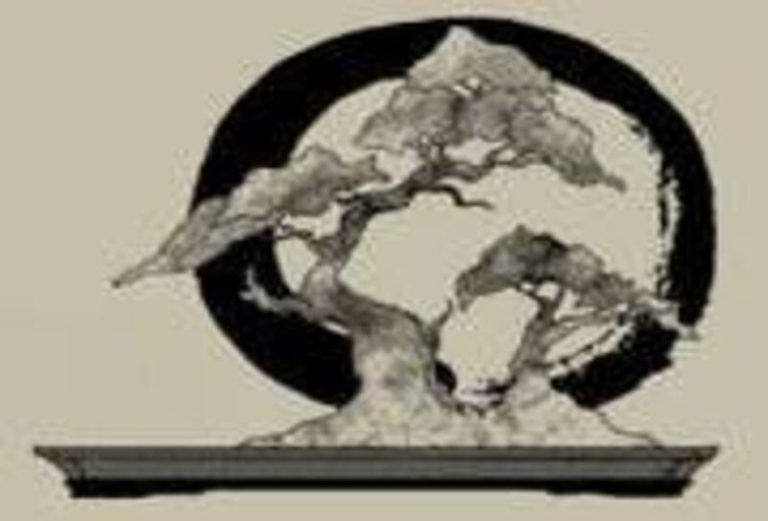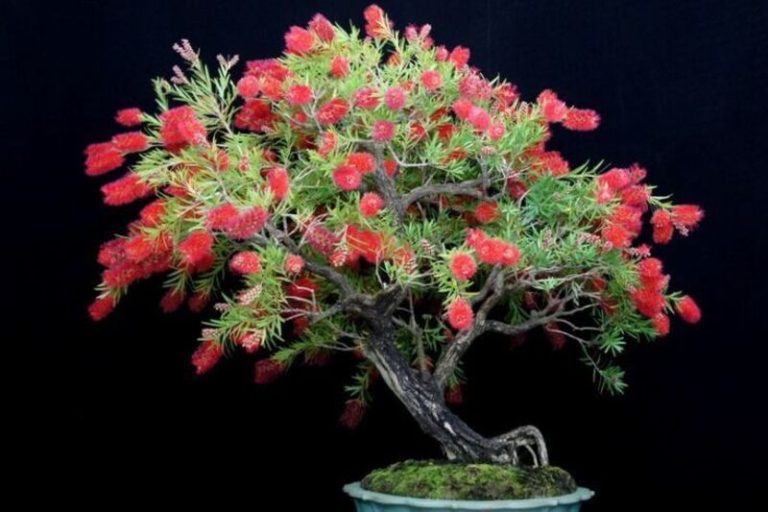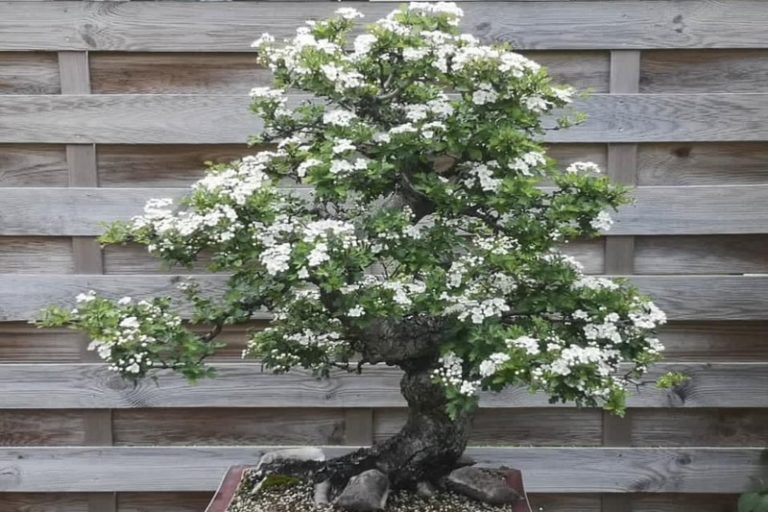Maui Bonsai: Unveiling the Beauty of Hawaiian Flora in Miniature Form
Bonsai is the art of growing small trees, and bonsai from Maui have their own special appeal. In this article, we’ll look more closely at what Maui bonsai is and we will learn how to cultivate and care for your own maui bonsai.
Understanding Maui Bonsai
Maui is a wonderful destination for bonsai enthusiasts. It offers a variety of native plant species that are perfect for bonsai cultivation. The climate, soil composition, and sunlight requirements on Maui play a crucial role in growing these tiny trees.
What is a Maui Bonsai?
Maui Bonsai is the growing and taking care of small trees on the Hawaiian island of Maui. It includes growing plants that are native to Maui and turning them into small trees that look nice. The temperature and surroundings of Maui make it possible for these bonsai trees to grow and thrive. Maui Bonsai trees are often featured in homes, parks, exhibitions, and bonsai shows because of how beautiful they are. It is a specialty form of art that takes patience, attention to detail, and a love of nature.
History and Origins of the Maui Bonsai
The history and origins of Maui Bonsai are profoundly rooted in the ancient Chinese art of bonsai, which later evolved in Japan. Bonsai has a long, illustrious history that dates back countless centuries.
It is believed that the art of bonsai originated in China, where miniature trees were grown in receptacles for aesthetic purposes. These miniature trees were frequently displayed in imperial palaces as symbols of affluence and status. This art form was introduced to Japan by Chinese immigrants, where it flourished.
Bonsai became ingrained in Japanese culture and adopted its distinctive design and philosophy. The Japanese refined bonsai cultivation techniques by emphasizing the creation of trees that reflected the essence of nature and elicited a sense of harmony and balance. Bonsai progressively evolved from a symbol of luxury to a beloved art form accessible to people of all socioeconomic backgrounds.
The specific history of Maui Bonsai, as a regional variation of bonsai, is closely tied to the island of Maui in Hawaii. With its lush tropical landscape and diverse native plant species, Maui became an ideal setting for bonsai enthusiasts to adapt their techniques and cultivate miniature trees in harmony with the island’s environment.
Bonsai fans on Maui have gotten into the art form over the years and have come up with their own style, which is affected by the island’s plants and natural surroundings. They have grown and turned plants that are native to Maui, like the Hawaiian Hibiscus and Plumeria, into beautiful bonsai trees that show what the island is like.
Maui Bonsai is an art form that has been around for a long time. Its past and origins show how the art has been able to change and grow in different culture and geographical settings. Maui Bonsai is still loved and practiced by bonsai artists and fans on the island, who help it continue to change and be recognized as a unique form of bonsai gardening.
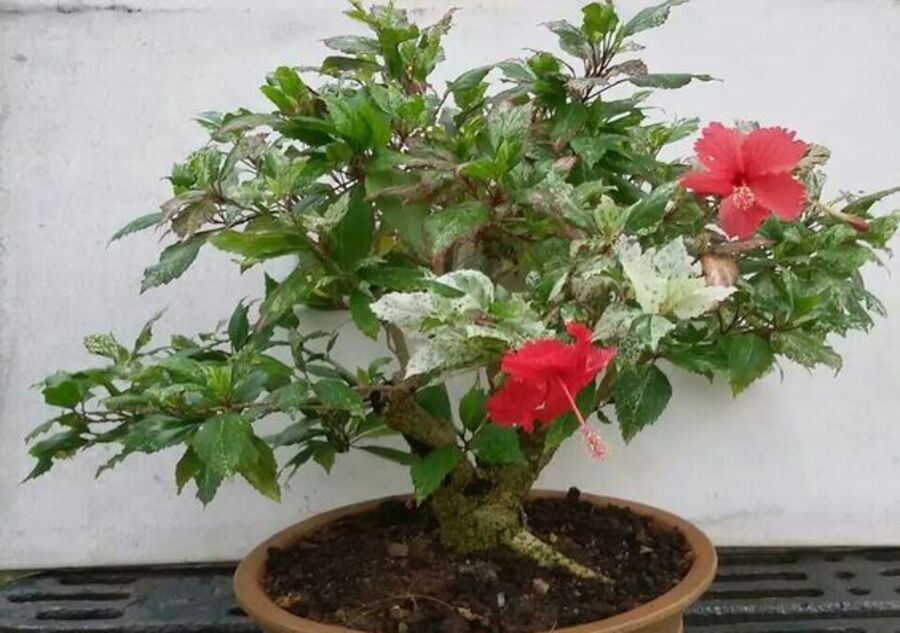
Types of Maui Bonsai
Maui Bonsai encompasses a variety of native plant species found on the island of Maui in Hawaii. Here are some types of Maui Bonsai commonly cultivated by enthusiasts:
1. Hawaiian Hibiscus (Hibiscus spp.): Maui bonsai enthusiasts often use Hawaiian hibiscus as their subject. Various shades of red, yellow, pink, and orange decorate its magnificent blooms. This tree is perfect for bonsai because of its glossy foliage and beautiful shape.
2. Plumeria (Plumeria spp.): Plumeria, which is also called Frangipani, is a tropical tree with flowers that smell nice and look beautiful. Maui Bonsai fans often grow plants like “Lei Rainbow” or “Maui Beauty,” which have a wide range of colors in their flowers. Plumeria bonsai trees exude a sense of tropical beauty.
3. Ohia Lehua (Metrosideros polymorpha): The Ohia Lehua is an iconic native tree of Hawaii, known for its bright red blossoms. It is a hardy species that thrives in volcanic soils. Maui Bonsai artists appreciate the tree’s unique bark texture and delicate flowers, which can be incorporated into stunning bonsai compositions.
4. Hawaiian Mango (Mangifera indica): Maui Bonsai is often made from the Hawaiian Mango tree, which has sweet fruit and shiny leaves. Bonsai fans might find the tree interesting because of its unique shape and pretty leaves. The mango bonsai can show both how pretty it is and how it could bear fruit.
5. Cook Pine (Araucaria columnaris): The Cook Pine, commonly known as the Christmas Tree Pine, is a pine tree endemic to Maui and other South Pacific islands. Because of its straight base, tidy branches, and unusual form, it makes an excellent bonsai tree. The Cook Pine bonsai is a one-of-a-kind method to give elegance to an evergreen plant.
These are just a few examples of the types of Maui Bonsai trees that enthusiasts cultivate. The selection of species for bonsai depends on personal preferences, suitability to the Maui climate, and the artistic vision of the bonsai artist. The diversity of native plant species on Maui provides ample opportunities for creativity and exploration in the world of Maui Bonsai.
Maui Bonsai and its Symbolism
Maui Bonsai, like bonsai in general, holds symbolism that goes beyond its physical beauty. Here are some symbolic aspects associated with Maui Bonsai:
Harmony with Nature: Maui Bonsai represents the harmony between humans and the natural world. Through careful cultivation and shaping, bonsai artists strive to capture the essence of nature in miniature form. The trees symbolize the interconnectedness and balance between humans and their environment.
Patience and Contemplation: Bonsai cultivation requires patience, as the trees are carefully nurtured and shaped over time. Maui Bonsai embodies the value of patience and the importance of slowing down, observing, and contemplating the beauty of nature. It reminds us to appreciate the gradual processes of growth and transformation.
Simplicity and Balance: Maui Bonsai often follows the principles of simplicity and balance in its design. The trees are pruned and shaped to achieve a sense of aesthetic equilibrium, with branches and foliage carefully arranged. This symbolism reflects the Japanese concept of “Wabi-Sabi,” finding beauty in imperfection and embracing the simplicity of life.
Reflection of the Environment: Maui Bonsai captures the spirit of the island and its unique ecosystem. By cultivating native plant species, Maui Bonsai symbolizes a connection to the local environment, preserving and appreciating the island’s natural beauty. The miniature trees serve as reminders of the rich biodiversity and cultural heritage of Maui.
Tranquility and Serenity: Bonsai trees, particularly Maui Bonsai, instill a sense of calm and tranquility. Their small size and creative presentation offer a tranquil and serene aura. Maui Bonsai represents a getaway from the rush and bustle of daily life, offering introspection and inner serenity.
Resilience and Adaptability: Bonsai trees endure rigorous training and careful cultivation to maintain their miniature form. They symbolize resilience and adaptability in the face of challenges. Maui Bonsai, specifically, demonstrates the ability to thrive in the unique climate and environmental conditions of the island.
Maui Bonsai carries a profound symbolism that resonates with nature, human connection, patience, simplicity, and tranquility. It serves as a reminder of our relationship with the natural world and encourages us to find balance and beauty in both our surroundings and within ourselves.
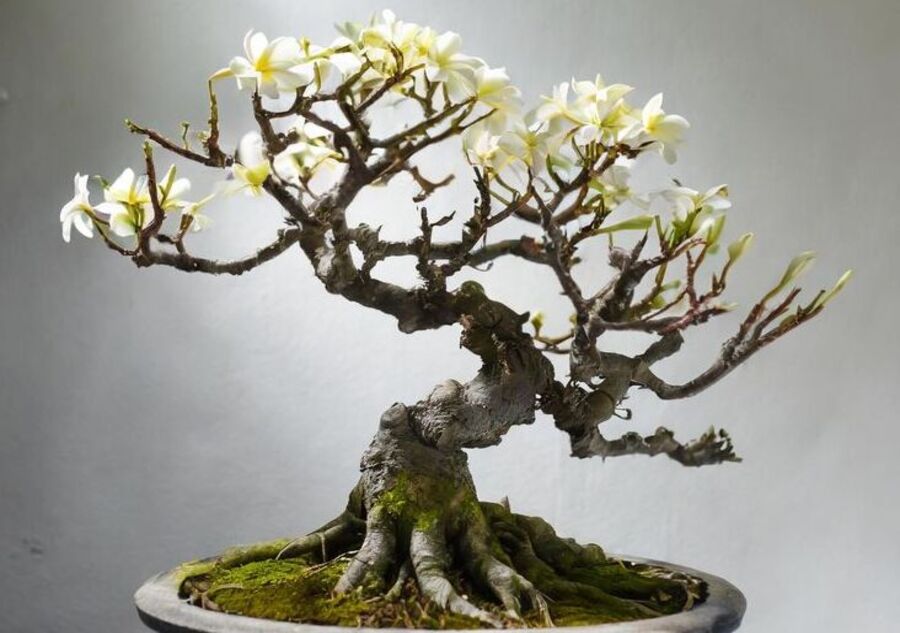
Characteristics of the Maui Bonsai
The Maui Bonsai has numerous distinguishing features that set it different from other bonsai designs. The Maui Bonsai has the following characteristics:
Native Plant Species: Maui Bonsai primarily features native plant species found on the island of Maui. These plants are carefully selected to reflect the unique flora of the region, such as the Hawaiian Hibiscus, Plumeria, Ohia Lehua, and other tropical trees and shrubs. By using local species, Maui Bonsai celebrates and showcases the natural beauty of the island.
Tropical Aesthetics: Due to its tropical climate, Maui Bonsai exhibits lush, vibrant foliage and colorful flowers. The trees often display glossy leaves and delicate, visually striking blooms. The tropical aesthetics of Maui Bonsai create an exotic and captivating visual appeal, differentiating it from other bonsai styles that may focus on more temperate or deciduous trees.
Environmental Adaptability: Maui Bonsai demonstrates an ability to adapt to the specific environmental conditions of the island. The trees are cultivated to withstand the Maui climate, which includes warm temperatures, high humidity, and ample sunlight. Bonsai artists in Maui develop techniques and practices that accommodate the specific needs of the native plant species in this tropical setting.
Artistic Reflection of the Island: Maui Bonsai often aims to reflect the natural beauty and cultural heritage of the island. The shape, form, and styling of the bonsai trees may draw inspiration from the landscapes, elements, and traditional art forms of Maui. The artistic interpretation of Maui’s essence in bonsai compositions contributes to the unique character of Maui Bonsai.
Island-Specific Containers: The choice of containers or pots for Maui Bonsai can also reflect the local aesthetic. Artists may opt for containers made from materials found on the island, such as volcanic rock or local pottery, to further emphasize the connection between the bonsai and its Hawaiian roots.
Symbolic Island Representation: Maui Bonsai represents the island’s natural beauty, biodiversity, and cultural legacy. It represents the local environment and the relationship between humans and nature. The little bonsai trees capture the spirit of Maui’s vegetation and inspire a sense of calm and harmony.
The characteristics of the Maui Bonsai make it a distinct and captivating style within the world of bonsai. By incorporating native plants, embracing tropical aesthetics, adapting to the Maui environment, and reflecting the island’s art and symbolism, Maui Bonsai showcases the unique natural and cultural identity of Maui.
How to Grow a Maui Bonsai
Growing a Maui Bonsai necessitates paying attention to particular aspects and practices to assure the health and development of the bonsai tree. Here is a step-by-step approach on growing a Maui Bonsai:
- Selecting the Right Tree: Choose a native plant species that thrives in the Maui climate and suits your artistic vision. Popular choices include Hawaiian Hibiscus, Plumeria, Ohia Lehua, and tropical fruit trees like Mango or Avocado. Obtain a young tree or start from seeds or cuttings.
- Choosing the Right Container: Select a suitable container or pot that allows for proper drainage and provides enough space for the roots to grow. The container should complement the aesthetic of the bonsai and be in proportion to the size of the tree.
- Soil Composition: Create a well-draining soil mix suitable for the plant type you’ve chosen. Maui Bonsai often benefit from a mix of volcanic soil, organic elements like as compost or peat moss, and coarse sand or perlite to improve drainage.
- Planting and Root Pruning: Carefully plant the tree in the container, ensuring that the roots are spread evenly and not cramped. Trim any excessively long or tangled roots to encourage healthy growth and prevent them from circling around the pot.
- Watering: Water your Maui Bonsai regularly, keeping the soil moist but not waterlogged. The frequency of watering will depend on the species and the environmental conditions. Check the moisture level by inserting a finger into the soil; if it feels dry about an inch deep, it’s time to water.
- Sunlight and Temperature: Provide sufficient sunlight for your Maui Bonsai. The majority of tropical bonsai trees flourish in indirect, intense light. As direct sunlight can scorch the foliage, avoid situating the bonsai in direct sunlight, particularly during the hottest hours of the day. Maintain an appropriate temperature range according to the needs of the plant.
- Fertilizing: Apply a balanced, slow-release fertilizer specifically formulated for bonsai trees. Follow the recommended dosage and frequency indicated on the fertilizer package. Fertilizing provides essential nutrients for healthy growth and vibrant foliage.
- Pruning and Shaping: Regularly prune your Maui Bonsai to maintain its desired shape and size. Trim back overgrown branches, remove dead or diseased foliage, and shape the tree to achieve a balanced and aesthetically pleasing form. Pruning encourages new growth and helps maintain the bonsai’s miniature size.
- Pests and Diseases: Monitor your Maui Bonsai for any signs of pests or diseases, such as aphids, scale insects, or fungal infections. Take appropriate measures, such as using organic pest control methods or consulting with a bonsai expert, to address any issues promptly.
- Patience and Care: The cultivation of a Maui Bonsai requires perseverance and consistency. Observe and adjust your irrigation, fertilizing, and pruning schedule on a consistent basis. Appreciate the beauty and uniqueness of your bonsai as it develops progressively over time.
By following these guidelines and continually learning about the specific needs of your chosen plant species, you can successfully grow a Maui Bonsai that thrives and embodies the beauty of the island’s flora. Remember that each bonsai is a living work of art that requires ongoing care and attention.
Benefits of the Maui Bonsai
Maui Bonsai offers several benefits for both the bonsai enthusiast and the environment. Here are some key benefits of growing and nurturing Maui Bonsai trees:
1. Connection with Nature: The cultivation and maintenance of a Maui Bonsai enables individuals to develop a stronger connection with nature. The process of caring for a bonsai tree, observing its growth, and appreciating its attractiveness can promote tranquility, mindfulness, and a deeper appreciation for the natural world.
2. Aesthetic Beauty: Maui Bonsai trees are admired for their exquisite beauty. The miniature form, carefully pruned branches, and vibrant foliage create visually captivating displays. Maui Bonsai can enhance the aesthetics of indoor and outdoor spaces, adding a touch of natural elegance and tranquility to any environment.
3. Environmental Conservation: By cultivating native plant species found on Maui, Maui Bonsai contributes to environmental conservation efforts. Growing and preserving these plant species in bonsai form helps protect and celebrate the island’s unique flora. It supports the conservation of local biodiversity and the preservation of native plants.
4. Education and Cultural Preservation: Maui Bonsai provides an opportunity to learn about the native plant species and cultural heritage of the island. The art form embodies the traditional techniques and aesthetics associated with bonsai, preserving and passing on this valuable knowledge to future generations.
5. Therapeutic and Stress Relief: Maui Bonsai maintenance and cultivation can have therapeutic benefits. It provides a sense of calm, tension relief, and an escape from the stresses of daily life. The process of caring for a living tree and observing its development can bring satisfaction and happiness.
6. Personal Creativity and Expression: Maui Bonsai allows for personal creativity and expression. Bonsai artists can shape and style the trees according to their artistic vision, incorporating their unique interpretation of Maui’s natural beauty into the bonsai compositions. It offers a creative outlet for self-expression and the opportunity to showcase individual artistry.
7. Community and Social Engagement: Maui Bonsai enthusiasts can connect with like-minded individuals by joining local bonsai clubs or participating in exhibitions and shows. This sense of community allows for the exchange of knowledge, techniques, and appreciation for bonsai, fostering social connections and friendships.
8. Mindfulness and Patience: Growing a Maui Bonsai encourages mindfulness and patience. The gradual process of shaping and caring for the bonsai tree teaches patience, attentiveness, and the ability to appreciate the beauty of slow, natural growth.
Maui Bonsai offers a variety of advantages, including the opportunity for personal development, environmental conservation, and cultural preservation. It is a rewarding and edifying practice that enables individuals to connect with nature, express their creativity, and find serenity and harmony.
Styling and Design of the Maui Bonsai
The styling and design of Maui Bonsai incorporate various elements to create visually appealing and harmonious compositions. Here are some common styling techniques and design principles used in Maui Bonsai:
Size and Proportion: Maui Bonsai aims to achieve a balanced and proportionate appearance. The size of the bonsai tree should be in harmony with the container or pot it is planted in. Careful consideration is given to the proportions of the trunk, branches, and foliage to create a visually pleasing and cohesive composition.
Trunk Formation: The trunk of a Maui Bonsai is often styled to exhibit movement and character. Bonsai artists use techniques such as wiring and bending to create gentle curves, twists, or slants in the trunk. This adds visual interest and reflects the unique growth patterns found in nature.
Branch Placement and Direction: The placement and direction of branches play a crucial role in the design of Maui Bonsai. Branches are carefully pruned and shaped to create an open structure that allows light to reach all parts of the tree. The branches should radiate from the trunk in a balanced and natural manner, avoiding excessive crowding or crossing.
Foliage Arrangement: The foliage of a Maui Bonsai is meticulously pruned and arranged to enhance the overall design. Bonsai artists selectively remove excess leaves and shape the foliage pads to create a harmonious arrangement. This helps maintain a delicate balance between negative space and foliage, highlighting the beauty of the tree’s structure.
Apex and Crown Formation: The apex or crown of a Maui Bonsai is an important focal point. Bonsai artists shape the apex to achieve a desirable silhouette and balance with the rest of the tree. The crown is typically styled to have a rounded or triangular shape, although specific styles like informal upright or windswept may call for different forms.
Nebari (Root Spread): The root spread, known as nebari, is an essential element in the design of Maui Bonsai. Bonsai artists encourage the development of visible surface roots that radiate from the base of the trunk. Nebari adds stability and visual strength to the composition, giving the impression of an aged and well-established tree.
Landscape Features: Some Maui Bonsai compositions incorporate landscape features to create a sense of natural scenery. These features can include miniature rocks, moss, small figurines, or even a small water feature. These elements add depth, context, and a storytelling aspect to the overall design.
Seasonal Considerations: Maui Bonsai can be styled to reflect the changing seasons. Some trees may be trained to showcase specific characteristics during certain times of the year, such as the vibrant blossoms of a Plumeria bonsai or the fall foliage of a Hawaiian Maple. Seasonal styling adds a dynamic element to the bonsai’s design.
The styling and design of Maui Bonsai are guided by the principles of balance, harmony, and mimicking nature’s aesthetics. Each tree is a unique expression of the artist’s vision, incorporating the natural beauty of Maui’s flora into captivating bonsai compositions.
How to Care for and Maintain Maui Bonsai
Caring for and maintaining a Maui Bonsai requires attention to specific practices to ensure the health and longevity of the tree. Here are some essential care guidelines for your Maui Bonsai:
- Watering: Regular and appropriate watering is crucial for the well-being of your Maui Bonsai. Check the moisture level of the soil by inserting your finger about an inch deep. Water thoroughly when the top inch of soil feels dry. Avoid overwatering, as it can lead to root rot, and underwatering, as it can cause the tree to dry out. Adjust the watering frequency based on environmental conditions such as temperature and humidity.
- Sunlight: Provide your Maui Bonsai with the right amount of sunlight. Most tropical bonsai trees thrive in bright, indirect light. Place your bonsai where it receives several hours of sunlight each day. Avoid exposing it to intense, direct sunlight, especially during the hottest part of the day, as it can scorch the leaves. If indoor conditions do not provide sufficient light, consider supplementing with artificial grow lights.
- Temperature and Humidity: Maui Bonsai prefers warm temperatures ranging from 60°F to 85°F (15°C to 29°C). Protect it from extreme temperature fluctuations and cold drafts. Maintain a relatively high humidity level around the bonsai by placing it on a humidity tray filled with water or by using a humidifier. Mist the foliage occasionally to provide additional moisture.
- Pruning and Shaping: Regular pruning is essential for maintaining the desired shape and size of your Maui Bonsai. Remove any dead, damaged, or diseased branches. Trim back excessive growth to maintain a balanced form. Use sharp and clean bonsai shears or scissors to make clean cuts, and avoid leaving stubs. Pruning should be done during the appropriate season for your specific tree species.
- Fertilizing: Feed your Maui Bonsai with a balanced, slow-release fertilizer formulated for bonsai trees. Follow the instructions on the fertilizer package for dosage and frequency. Fertilize during the growing season, typically from spring to early autumn. Reduce or stop fertilizing during the winter months when the tree is in a dormant phase.
- Repotting: Repotting is necessary to provide fresh soil and prevent root congestion. Repot your Maui Bonsai every two to three years, or when the roots have filled the container. The timing may vary depending on the growth rate of your tree. Repot during the spring when the tree is actively growing. Trim and prune the roots during repotting to maintain a healthy root system.
- Pests and Diseases: Monitor your Maui Bonsai for signs of pests such as aphids, scale insects, or spider mites. Inspect the foliage and undersides of leaves regularly. If pests are detected, use appropriate organic pest control methods or consult with a bonsai expert for guidance. Keep the bonsai clean and remove any fallen leaves or debris that may harbor pests or encourage disease.
- Winter Care: Protect your Maui Bonsai from extreme cold during the winter months. If kept indoors, ensure it is placed in a cool room away from heating vents. If kept outdoors, provide protection from frost by moving the bonsai to a sheltered location or using frost covers.
- Observation and Careful Monitoring: Regularly observe your Maui Bonsai for any changes in its health, growth, or appearance. Be attentive to signs of stress, such as yellowing leaves, wilting, or pests. Adjust your care routine accordingly to address any issues promptly.
Remember that caring for a Maui Bonsai is an ongoing process that requires patience, attentiveness, and a willingness to learn. By providing the right conditions, practicing proper care techniques, and responding to the specific needs your bonsai tree healthy and thriving.
Maui Bonsai Care sheet
| Aspect | Care Tips |
| Watering | Check soil moisture regularly and water when the top inch feels dry. |
| Avoid overwatering or underwatering. | |
| Adjust watering frequency based on environmental conditions. | |
| Sunlight | Provide bright, indirect light. Avoid intense, direct sunlight. |
| Ensure the bonsai receives several hours of sunlight daily. | |
| Temperature | Maintain temperatures between 60°F to 85°F (15°C to 29°C). |
| Protect from extreme temperature fluctuations and cold drafts. | |
| Humidity | Maintain a relatively high humidity level around the bonsai. |
| Use humidity trays or a humidifier, and mist the foliage occasionally. | |
| Pruning and Shaping | Regularly prune to maintain shape and size. |
| Remove dead, damaged, or diseased branches. | |
| Use sharp and clean bonsai shears or scissors for clean cuts. | |
| Fertilizing | Use a balanced, slow-release bonsai fertilizer. |
| Follow the instructions on the fertilizer package for dosage and frequency. | |
| Repotting | Repot every two to three years or when roots have filled the container. |
| Repot during spring when the tree is actively growing. | |
| Trim and prune roots during repotting. | |
| Pests and Diseases | Monitor for pests regularly and inspect the foliage and undersides of leaves. |
| Use organic pest control methods or consult with an expert if pests are detected. | |
| Winter Care | Protect from extreme cold and frost. |
| Place indoors in a cool room away from heating vents or use frost covers when kept outdoors. | |
| Observation and Careful | Regularly observe the bonsai for changes in health, growth, or appearance. |
| Monitoring | Respond to signs of stress promptly and adjust care routine accordingly. |
| Keep the bonsai clean and remove fallen leaves or debris. |
Remember that care requirements may vary depending on the specific species of Maui Bonsai you have. It’s essential to research and understand the specific needs of your bonsai tree to provide optimal care.
Conclusion:
Maui bonsai is a captivating art form that requires patience and dedication. By understanding the unique characteristics of Maui bonsai, choosing the right tree, providing proper care, and promoting it online, you can enjoy the beauty of these miniature trees and share your passion with others. Remember, ongoing care and cultivation are essential to keeping the bonsai community thriving. So, start your journey into the world of Maui bonsai and experience the joy it brings.
FAQ:
Q: What is the Maui Bonsai?
A: Maui Bonsai refers to bonsai trees endemic to Hawaii’s island of Maui. These bonsai trees are generally native plant species found on the island and are nurtured in the bonsai art form.
Q: How is the Maui Bonsai different from other bonsai trees?
A:The Maui Bonsai is distinctive in that it portrays the native plant species found on the Hawaiian island of Maui. It distinguishes itself from other areas’ bonsai trees by highlighting the natural beauty and cultural relevance of the native flora.
Q: Can I grow a Maui Bonsai outside of Maui?
A: Yes, you can grow a Maui Bonsai outside of Maui. Many native Hawaiian plant species found on Maui can be cultivated as bonsai trees in various locations around the world, as long as the environmental conditions can support their growth requirements.
Q: What are some common plant species used for Maui Bonsai?
A: Common plant species used for Maui Bonsai include Hawaiian hibiscus (Hibiscus arnottianus), plumeria (Plumeria spp.), Hawaiian hala (Pandanus tectorius), Hawaiian ti plant (Cordyline fruticosa), and Hawaiian dwarf umbrella tree (Schefflera arboricola).
Q: Do Maui Bonsai trees require special care compared to other bonsai trees?
A: Maui Bonsai plants require special care based on the local plant type. It is critical to investigate and comprehend the specific requirements of the species you are raising. Watering, sunshine, temperature, and humidity may differ depending on the plant species.
Q: Can I create my own Maui Bonsai from a native plant I find on Maui?
A: Creating a Maui Bonsai from a native plant found on Maui is possible, but it requires knowledge and expertise in bonsai cultivation techniques. It involves careful root pruning, styling, and ongoing maintenance. It’s recommended to learn from experienced bonsai enthusiasts or seek guidance from bonsai clubs or experts.
Q: How long does it take for a Maui Bonsai to mature?
A:The time it takes for a Maui Bonsai to grow is determined by several factors, including the plant type, the tree’s beginning size, and the intended aesthetic. Bonsai growing is a time-consuming and lengthy process that might take years or even decades to acquire the ideal maturity and refinement.
Q: Can I display my Maui Bonsai indoors?
A: Yes, you can display your Maui Bonsai indoors, provided it receives adequate light and proper care. Choose a location with bright, indirect light and avoid placing it near drafts or temperature extremes. Consider using artificial grow lights if natural light is insufficient.
Q: Can I bonsai any plant I find on Maui?
A: Not all plant species found on Maui are suitable for bonsai cultivation. It’s important to choose plant species that have suitable characteristics for bonsai, such as small leaves, interesting trunk structure, and the ability to withstand bonsai techniques like pruning and root reduction. Research and consult with experts to determine suitable plant choices.
Q: Where can I learn more about Maui Bonsai?
A: Joining bonsai clubs or organizations, attending workshops and seminars, reading books on bonsai cultivation, and researching internet resources and forums dedicated to bonsai can all help you learn more about Maui Bonsai. Local botanical gardens or nurseries may also provide workshops or activities relating to bonsai.
Also Read:



